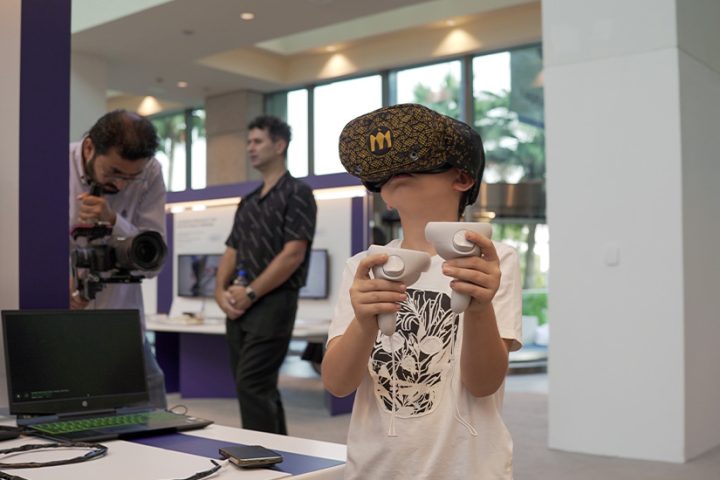The Artificial Intelligence (AI) renaissance that has so markedly affected the way technology platforms and devices of all kinds have developed this decade was at first met with skepticism.
Thankfully, we’re mostly past the initial misperceptions and we’re now busy applying AI to the coalface of business workflows in every vertical. We now realize that AI isn’t going to make us all redundant overnight, but it is going to channel us towards some new roles in work.
The robots are taking some aspects of our jobs over, but these are the repetitive tasks that we humans regard as part of the monotony of life. Fortunately, these are the definable, containable, measurable and essentially repeatable tasks that robots ‘enjoy’ doing.
The big AI work questions
The questions we must now face to understand the impact of AI in the workplace are:
- whose job is going to change and how;
- which types of professions will be impacted the most;
- where will AI change male and female roles in different ways; and
- how will these trends manifest themselves in developed versus developing countries?
Let’s address that last point first. McKinsey & Company’s report on The Future of Women at Work: Transitions in the Age of Automation says that men and women tend to cluster in different occupations in different ways across mature and emerging economies:
“This [clustering] shapes the jobs lost and gained due to automation for each. In the mature economies studied, women account for 15% on average of machine operators, but over 70% on average of clerical support workers. In the emerging economies [in the study sample], women make up less than 25% of machine operators on average, but over 40% of clerical support workers.”
It starts to become clear that roles in developed economies, which might typically be filled by highly specialized knowledge workers, will initially be less impacted by AI and automation than those that require comparatively simple physical machine operation.
This is not a binary division set in stone though. Over time, digital workflows and the application of data intelligence mean that even lawyers, doctors and actuaries, for example, will also see an increasing degree of their role handled by AI. The difference is, an unskilled or semi-skilled machine operator might see their job displaced in entirety. A skilled worker on the other hand can use the extra time they’re given to focus on value-added actions.
What humans are good at
We know that machines are good at cold, hard repetitive tasks. So that makes them really good at actions performed by rotation and even by conditioning – which is pretty much what Machine Learning is anyway. But it makes them comparatively bad at intuitive empathy on a human level.
If you were diagnosed with some challenging medical symptom, would you be happy hearing about it from a computer-generated readout as opposed to a human being? Even though we are making strides towards affective computing – or Artificial Emotional Intelligence as it is sometimes known – we are a long way off from any technology that can genuinely recognize human emotions and respond to them appropriately. Primary care physicians, caregivers, and therapists are unlikely to be outsourced to technology any time soon.
Part of this discussion highlights the need to understand the difference between Artificial Intelligence that makes decisions and Artificial Intelligence that advises on decisions. AI will change the nature of some work, but it won’t change the fact that people have to rely on ‘gut instinct’ in areas of critical thinking.
Let’s remember that, at a basic level, computers only know what we tell them based upon which datasets they are exposed to. Law firms are employing AI to help identify relevant documents in legal cases, but we still need a human judge to adjudicate a decision.
Chocolate pickle sauce
AI can be used to make music based upon identified beats and patterns. We know that it can even be used to create ‘art’ or at least some form of image based upon a defined request. But there are limits. AI engines directed at cooking have come up with abominations such as chocolate pickle sauce, simply because they fail to grasp the nuances of human taste.
Because of this gap between computer brains and human realities, I would assert that any job group that requires true creativity, such as writers, engineers, inventors, entrepreneurs, artists, musicians et cetera, is probably not going to be automated for a long while, for the most part at least.
Also remember, computers can perform jobs, but they can’t necessarily think. A computer can be programmed to Tweet, post to Facebook and even to create a suggested program of social media activities broken down by platform, time schedule and types of content. But that same computer can’t come up with a communications strategy from scratch for products and services that don’t necessarily even exist yet. True original ‘makers’ and ‘creators’ will find that their jobs are more robot-proof than others, for now at least.
The human-robot future workforce
Until the robots have robots (can we call them robot robots?) of their own to install and maintain them, humans are going to be needed to design, plan, install, manage and maintain any robotics, technology, or AI systems. This takes us back to my point about understanding what technology is capable of – the more familiar you are with the technology, the more valuable you will be in helping implement and maintain it.
For the immediate future – and long before ‘robot robots’ exist – it’s a human-robot future with both of us working in unison. What matters now to us as human beings is that we must realize that change is afoot – and that it is positive change. It is important for us to develop and champion all the creative skills that computer-driven AI and ML may never replace.
If you haven’t thought about your empathy, creativity, ability to develop strategic thinking and be a problem-solving human communicator, then now is your time to shine.
Don’t just sit there like a robot, or a robot might come and sit in your place.














